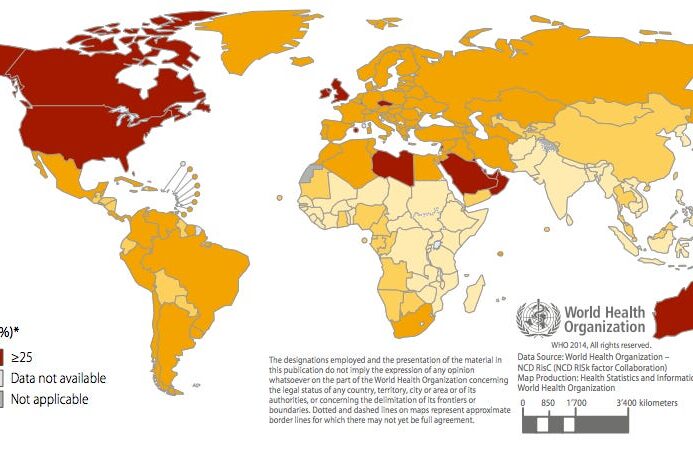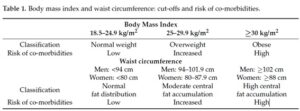Nutrition Concepts for the Treatment of Obesity in Adults. Part 1-5.
Abstract: Obesity caused by a positive energy balance is a serious health burden. Studies have shown that obesity is the major risk factor for many diseases like type 2 diabetes mellitus, coronary heart diseases, or various types of cancer. Therefore, the prevention and treatment of increased body weight are key. Different evidence-based treatment approaches considering weight history, body mass index (BMI) category, and co-morbidities are available: lifestyle intervention, formula diet, drugs, and bariatric surgery. For all treatment approaches, behaviour change techniques, reduction in energy intake, and increasing energy expenditure are required. Self-monitoring of diet and physical activity provides an effective behaviour change technique for weight management. Digital tools increase engagement rates for self-monitoring and have the potential to improve weight management. The objective of this narrative review is to summarize current available treatment approaches for obesity, to provide a selective overview of nutrition trends, and to give a scientific viewpoint for various nutrition concepts for weight loss. Keywords: dietary recommendation; weight loss; overweight; intermittent fasting; carbohydrate; fat; protein
-
The Challenge Obesity
Obesity is a complex, multifactorial, and largely preventable chronic disease defined as abnormal or excessive fat accumulation [1]. Body mass index (BMI), calculated as weight in kilograms divided by the square of height in metres (kg/m2), is the current most widely used criterion for classifying obesity [1]. People with a BMI 25 kg/m2 are classified as overweight, and a BMI 30 kg/m2 is categorized as obese [1–3] (Table 1). Although the BMI captures the degree of overweight and obesity, abdominal obesity measured mainly by waist circumference is additionally associated with health risks (Table 1). Clinical practice and medical guidelines focus on BMI and waist circumference as simple, objective, and reproducible tools to measure weight status and abdominal obesity. However, the diagnosis of obesity should not be based on BMI alone, rather together with other anthropometric and clinical parameters. Instrumental methods (e.g., bioimpedance analysis, Dual Energy X-ray Absorptiometry, and magnetic resonance imaging) to assess body composition and adipose tissue depots are available but are often time- and cost-intensive. It is well known that overweight and obesity are the main risk factors for several diseases such as type 2 diabetes mellitus, hypertension, dyslipidaemia, cardiovascular disease, and several types of cancer [4]. Recently published data show that BMI is positively
associated with severe coronavirus disease 2019 (COVID-19) outcomes [5]. Furthermore, an increased BMI might lead to a decline in quality of life and contribute to a decreased life expectancy [6–9].
The cause of obesity is a long-term energy imbalance caused by a combination of increased energy intake and reduced energy expenditure [1,6,10,11]. The National Health and Nutrition Examination Survey (NHANES) observed that the average daily energy intake increased from 1971 to 2000 in men by 168 kilocalories (kcal)/day and women by 335 kcal/day [12]. Without an active regulation or adaptation of energy balance, this increase theoretically could explain a weight gain per year of eight kilograms for men and 16 kg for women. Furthermore, energy expenditure has decreased over the last decades [12]. Basset and colleagues reported that in 2003, an American adult walked about 5000 steps/day. Compared to people living 300 years ago, it is a difference of 13,000 steps/day for men and 9000 steps/day for women [13]. Without any physiological adaption, this decline in physical activity could explain a yearly weight gain of 31 kg for men and 21 kg for women [10]. Daily occupation-related energy expenditure has decreased by more than 100 kcal/day in U.S. adults. That alone could explain a substantial weight gain in the population over the last five decades [14]. In addition to lifestyle factors, other contributing factors like food and environment have been identified [15].
Over the past 50 years, the prevalence of obesity has increased worldwide in pandemic dimensions [3,6,16–18]. The Global Burden of Disease study with data from 68.5 million persons demonstrated that in 2015 603.7 million adults were obese [19]. Since 1980, the prevalence of obesity has doubled in more than 70 countries and has continuously increased in most other countries [19]. If trends continue, by 2030, an estimated 38% of the world’s adult population will be overweight, and another 20% will be obese [20]. The confinements by the COVID-19 pandemic have changed lifestyle behaviour and have promoted an obesogenic environment. Weight trajectories during the COVID-19 lockdown have been shown [21,22]. It is expected that the COVID-19 pandemic reinforces the obesity pandemic with long-term consequences on the prevalence of overweight and obesity [23]. Because of the rapid increase in the prevalence and disease burden of obesity, it is indispensable to focus on monitoring BMI and to identify, implement, and evaluate evidence-based interventions to address this health issue [19].
MeikeWiechert and Christina Holzapfel *
Institute for Nutritional Medicine, School of Medicine, Technical University of Munich, 80992 Munich, Germany;
meike.wiechert@tum.de
* Correspondence: christina.holzapfel@tum.de; Tel.: +49-89-289-249-23
Citation: Wiechert, M.; Holzapfel, C.
Nutrition Concepts for the Treatment
of Obesity in Adults. Nutrients 2022,
14, 169. https://doi.org/10.3390/
nu14010169
Academic Editor: Ina Bergheim
Received: 25 November 2021
Accepted: 27 December 2021
Published: 30 December 2021
Publisher’s Note: MDPI stays neutral
with regard to jurisdictional claims in
published maps and institutional affiliations.
Copyright: © 2021 by the authors.
Licensee MDPI, Basel, Switzerland.
This article is an open access article
distributed under the terms and
conditions of the Creative Commons
Attribution (CC BY) license (https://
creativecommons.org/licenses/by/
4.0/).







